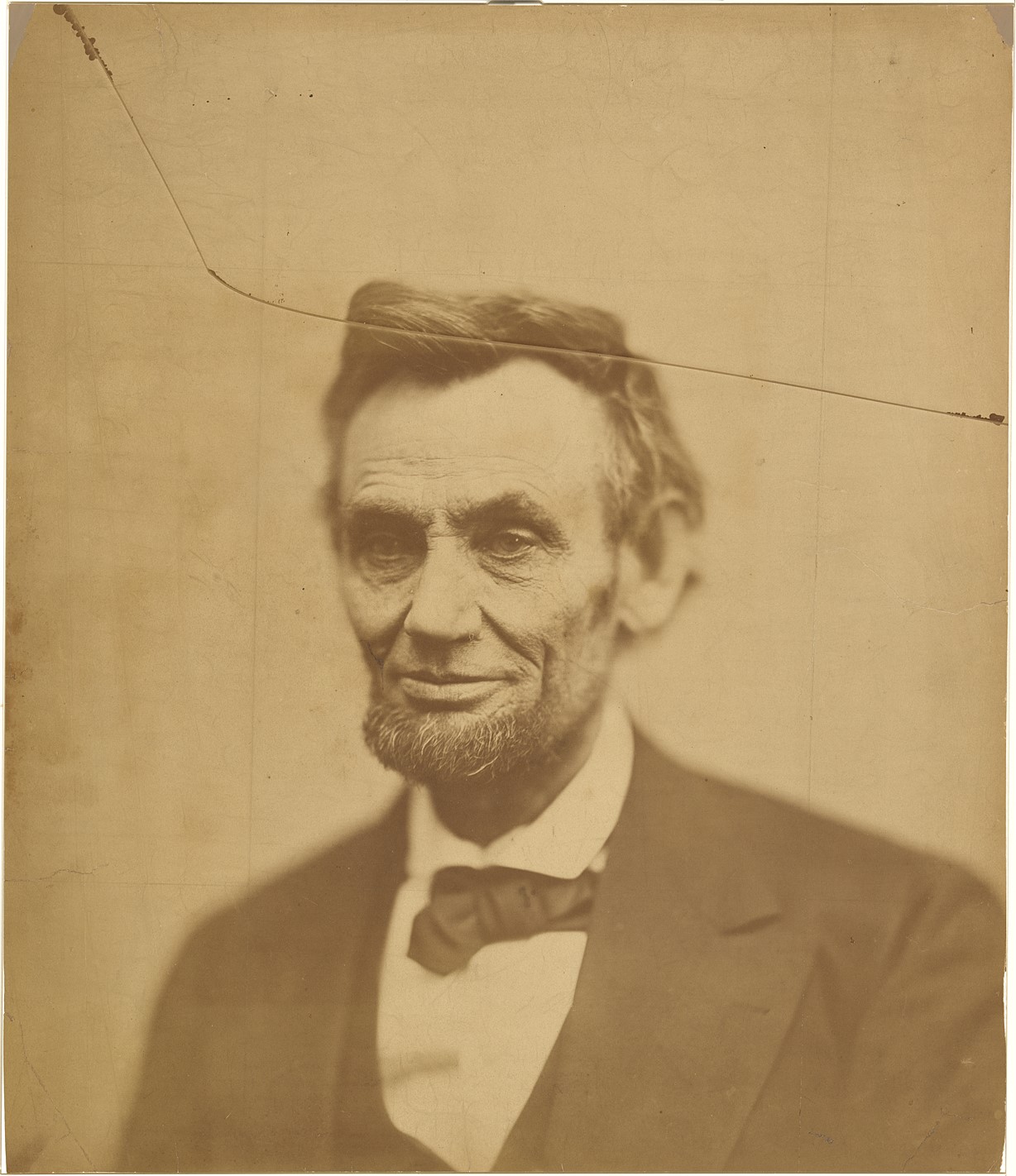Abraham Lincoln (1809–1865)

About the Sitter
The election of Abraham Lincoln to the presidency in 1860 triggered the secession of the southern states from the Union. The day after his inauguration, Lincoln learned that Fort Sumter, in Charleston, South Carolina, was running out of supplies. He made the difficult decision to resupply the fort, knowing that this could result in war. On April 12, 1861, Confederate guns fired on Fort Sumter, and the Civil War began.
During the war, Lincoln was criticized by people across the political spectrum. Abolitionists decried his refusal to eliminate slavery in favor of preserving the Union. Many criticized Lincoln’s temporary suspension of basic civil rights, under which fifteen thousand civilians were arrested and detained without trial. Lincoln also took the blame for Union losses on the battlefield.
As the Union victory became inevitable, debate flared over the emancipation of slaves. Some thought that Lincoln should abandon emancipation in order to end the war quickly. He refused, insisting that African American soldiers would not fight for the Union if it abandoned them. Lincoln knew this could cost him reelection. General William Tecumseh Sherman’s victory in Atlanta, Georgia, changed the mood in the North. Lincoln was triumphantly reelected in November 1864.
About the Portrait
Lincoln was the first president to take full advantage of photography, both as a campaign tool and as a way to craft a desirable public persona. These images, appearing on campaign buttons and in newspapers, transformed Lincoln from a gawky backwoods farmer into a statesman. Lincoln often spoke of his rural origins. In a speech he delivered on February 27, 1860, at the Cooper Union in New York City, for example, Lincoln said, “Twenty-five years ago I was a hired laborer, mauling rails, at work on a flat-boat—just what might happen to any poor man’s son.” Freedom, he said, allowed him to “better his condition” and was a right to which all men were entitled. This speech helped make Lincoln the Republican presidential candidate.
This photograph is one of a series taken by Alexander Gardner in his Washington, D.C., studio in February 1865. Known as an albumen silver print, it was made by contact printing a glass negative on lightsensitive paper coated with a solution of egg white (albumen) and salt. The large glass negative that Gardner used for this portrait broke after it was developed, and just one print was made before the ruined negative was discarded.
Activity
Lincoln’s Cabinet
Explain to students that Lincoln included four individuals in his cabinet who had run against him for the presidency, some of whom still believed that they were better qualified for the job. Discuss with the class the challenges Lincoln would face and the strategies he would have to develop to balance cabinet members’ personalities.
Divide students into groups and have each group select one of the cabinet members to research.
- William H. Seward (secretary of state)
- Simon Cameron (secretary of war)
- Edward Bates (attorney general)
- Salmon P. Chase (secretary of the treasury)
If desired, the project may be broadened to include other contenders in the presidential race, such as Stephen A. Douglas, John Breckinridge, and John Bell.
Instruct groups to research the following information about their candidate:
- Biographical information
- Main beliefs
- Support by region
- Views on slavery and the Civil War
- Strengths
- Weaknesses
- Role in Lincoln’s cabinet.
Groups should prepare a six-minute skit supporting their cabinet member in the form of a persuasive campaign commercial. Skits should include the candidate’s platform, views on the Civil War, and at least one direct quote. Skits may also include portraits of the candidates. Conclude the lesson with a group discussion about the different skills and abilities that each member brought to Lincoln’s cabinet and the ways in which this group functioned or failed during the Civil War.